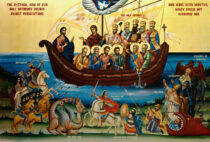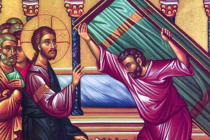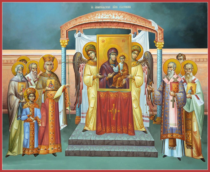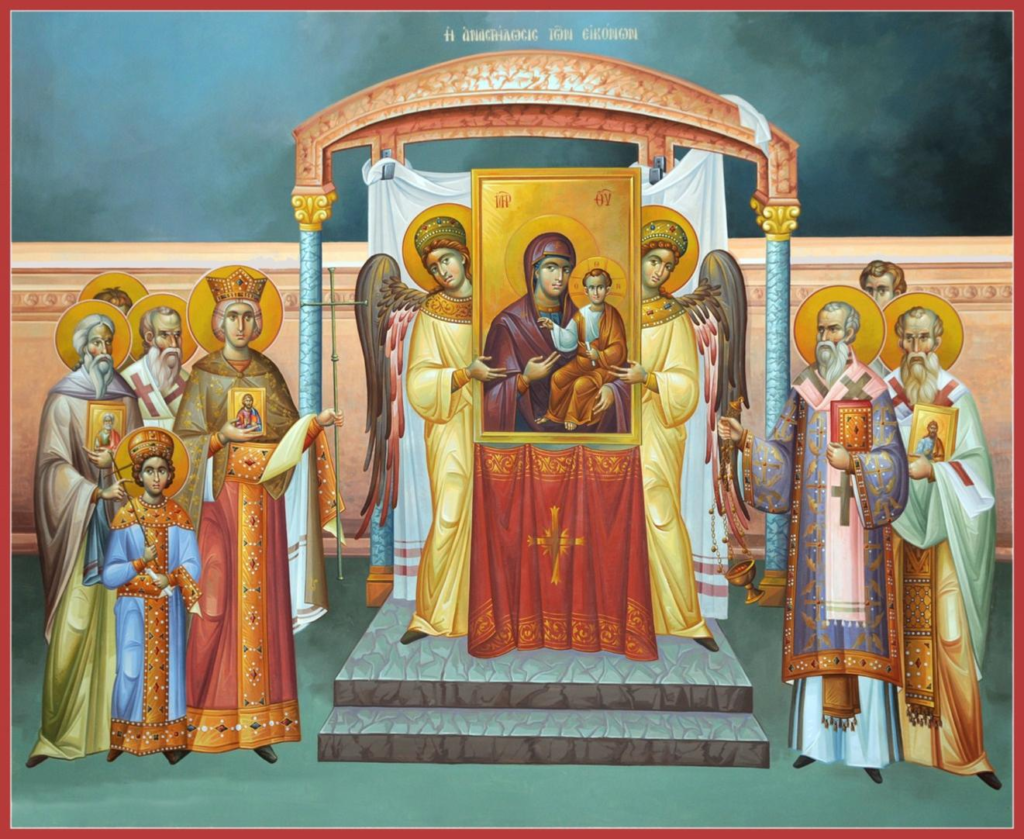We are one. We find our unity in our love; not the pseudo facsimile of love that the world can only offer, but the love of God, the love of one another, and a peace which the world cannot give. We are one in Christ: One God, One Truth, one cup, one loaf, one teaching, one faith, and one Church. With the Love of which the Gospel speaks, and which Paul demands of us, there is nothing that can divide us, and nothing that can move us. The Church is still here. We are still here.
United in Love
In the name of the Father, and of the Son, and of the Holy Spirit. One God! Amen.
The world would have you believe that truth is relative. That there is no absolute truth. The world would have you believe that truth is an individual thing: his truth, her truth, their truth. Lacking absolute truth they seek for those things outside themselves with which they mostly identify, things outside themselves which have little to do with their personhood as found in their humanity created in the image and likeness of their creator: their gender identity, their sexual identity, their social status, their wealth, and everything that lies between. Each broken person is a patchwork quilt of disparate and unrelated ideologies under which they try to find comfort. It is in this individuality with which they have fashioned for themselves their own image away from the image and likeness of their Creator, and it is in this false image of humanity with which they try to find or create community. They are all individual pieces of an unknown puzzle. The picture is a stranger to everyone, even those holding the pieces. They throw themselves together within the same puzzle box, thinking that coexistence somehow replaces that of communion and community. They somehow believe that proximity results in relationships and yet they have nothing of themselves to share with one another other than those things external to themselves instead of anything that’s actually of themselves or even theirs to give. They are “bonded” by the shifting vagaries of the world which will change at the next oncoming social tide. This is a sad and broken existence. The world is insane; for, they continue to do the same things over and over again while expecting a different result; yet, they continue to be broken, continue to be lost, continue in a hopeless misery of life because they lack the absolute truth revealed in the fullness of God. They keep seeking for more because the world has nothing more to give. Their houses are built on foundations of sand, and this is why with time, they nearly always collapse. However, Truth is eternal. Truth is unchanging. Truth is the firm foundation on which we all stand.
We are unconfused about our humanity and who we are. We are certain of ourselves because we are certain of God. We know ourselves because we know Christ. Our purpose is absolute because Truth is absolute. While we recognize the brokenness of man, we understand the frailty and futility of our human condition amidst the vagaries of an often harsh and unforgiving world. We may be broken, but our Hospital, the Church, is here to heal us. We may be bruised, shaken down and trampled underfoot, but we are certainly not divided, and will never be destroyed. We are one just as God is one, and we are united in the love of God. If we are each living stones of the body of Christ, then we are bound together by God’s love as a spiritual mortar, for this love is no common love, as Saint John Chrysostom says, but that which cements us together, and makes us cleave inseparably to one another, and effects as great and as perfect a union as though it were between limb and limb. For this is that love which produces great and glorious fruits.
This is the kind of love we hear about in our Gospel reading for today: ‘You shall love the Lord your God with all your heart, with all your soul, and with all your mind.’ 38 This is the first and great commandment. 39 And the second is like it: ‘You shall love your neighbor as yourself.’ 40 On these two commandments hang all the Law and the Prophets.” We give ourselves to God, but we also give ourselves to one another. We give to God ourselves, our whole thoughts, our whole understanding, and our whole life, leaving no part of ourselves no part of our lives that may be justly unfilled by Him. This type of love is absent of self and pride, for we love God first, and then all others, before we even come into our own picture. What’s more, Christ himself has said that “those who love me will keep and obey my commandments.” So, you see, love is not about how we feel, love is not about our emotions, love is not a statement, but it is an action. We love God, we love others, and manifest that love by that which we do in obedience to Him who gave us all things. That being said, what do we do that requires the most time and attention? Is it God? Is it our neighbor? Or is it some paltry thing, or something external to us? Keep this in mind: We become what we love, and who or what we love shapes what we become. If we love God, we become more like God. If we love things, we become a thing. If we love nothing, then we become nothing.
Look at those sitting next to you. Look at those around you. You are bound together in an eternal felicity found only in the knowledge and love of Christ. You are each bonded together by the blood of Christ. You share in your lives and salvation by the body and blood of Christ as an eternal food and remedy. We love each other because we love Christ, and it is in Christ by which we are all united. So we must think of this when we fail, not only Christ, not only ourselves, but all those to whom we share this eternal bond. Love is a choice, but Sin is also a choice, and it only seeks to rend that which God has brought together.
Sin is the antithesis to unity, and we see the results of this within the world around us. So when we face down our passions and the temptations of the flesh, when we get angry or choose to do something that would harm ourselves or another, would we do this to them, to any of these sitting around us? Remember this, because we are so united by the Love of God, anything we do apart from that affects not only us but the Church, and all those to whom we are bound by love. This is why confession is so important, because it not only heals our own wounds, but brings us back together with those we have willfully separated ourselves away from, even if we do not yet know it. Confession heals not only our own wounds, but those wounds we have inflicted upon the Church, those wounds we have inflicted upon one another, to those sitting around us, by way of our own negligence
We are one. We find our unity in our love; not the pseudo facsimile of love that the world can only offer, but the love of God, the love of one another, and a peace which the world cannot give. We are one in Christ: One God, One Truth, one cup, one loaf, one teaching, one faith, and one Church. With the Love of which the Gospel speaks, and which Paul demands of us, there is nothing that can divide us, and nothing that can move us. The Church is still here. We are still here.
Closing with the words of our blessed Father among the saints, Saint John Chrysostom, I leave you with this: “ Indeed, love is a strong wall, impregnable not only to men, but also to the devil. He who is surrounded by a multitude of those who love him cannot fall into danger; he has no reason to be angry, but always feels peace of heart, joy and gladness; there is no reason to be jealous; there are no occasions for vindictiveness. Look how easily he carries out both his spiritual and worldly affairs. Who can compare to him? He is like a city completely shielded by walls; and he [who has no love] is like a city without any protection.”
By the prayers of thy most pure mother, the holy and God bearing fathers, all the saints and the martyrs and the angels, have mercy on us and save us. Amen.





